Abstract
Nine patients are described with unilateral wasting of the hand muscles associated with elongated C7 transverse processes or with rudimentary cervical ribs. In three patients there was selective wasting of the lateral part of the thenar pad, accompanied by mild weakness of the other hand muscles. In four patients all the hand muscles were wasted, but this was more marked in the lateral part of the thenar pad than elsewhere. In two patients wasting was uniformly distributed throughout the hand. Weakness and wasting in the forearm was only present in four patients and was relatively mild. Sensory loss, when present, affected mainly the inner side of the forearm. Nerve conduction studies revealed no abnormality in the distal part of the median nerve, but some patients had reduced or absent sensory action potentials when the fifth finger was stimulated. In all nine patients a sharp fibrous band was found at operation, which extended from an elongated C7 transverse process or from a rudimentary cervical rib to the region of the scalene tubercle on the first rib. The fibrous band caused angulation of the C8 and T1 roots in five patients, and of the lower trunk of the brachial plexus in three. Pathological changes were frequently visible in affected nerves at the site of angulation. Division of the fibrous band relieved pain and paraesthesiae in eight patients and arrested muscle wasting and weakness in nine patients. There was, however, only slight recovery of power in affected muscles; wasting in the hand appeared to be unchanged after periods of up to eight years.
Full text
PDF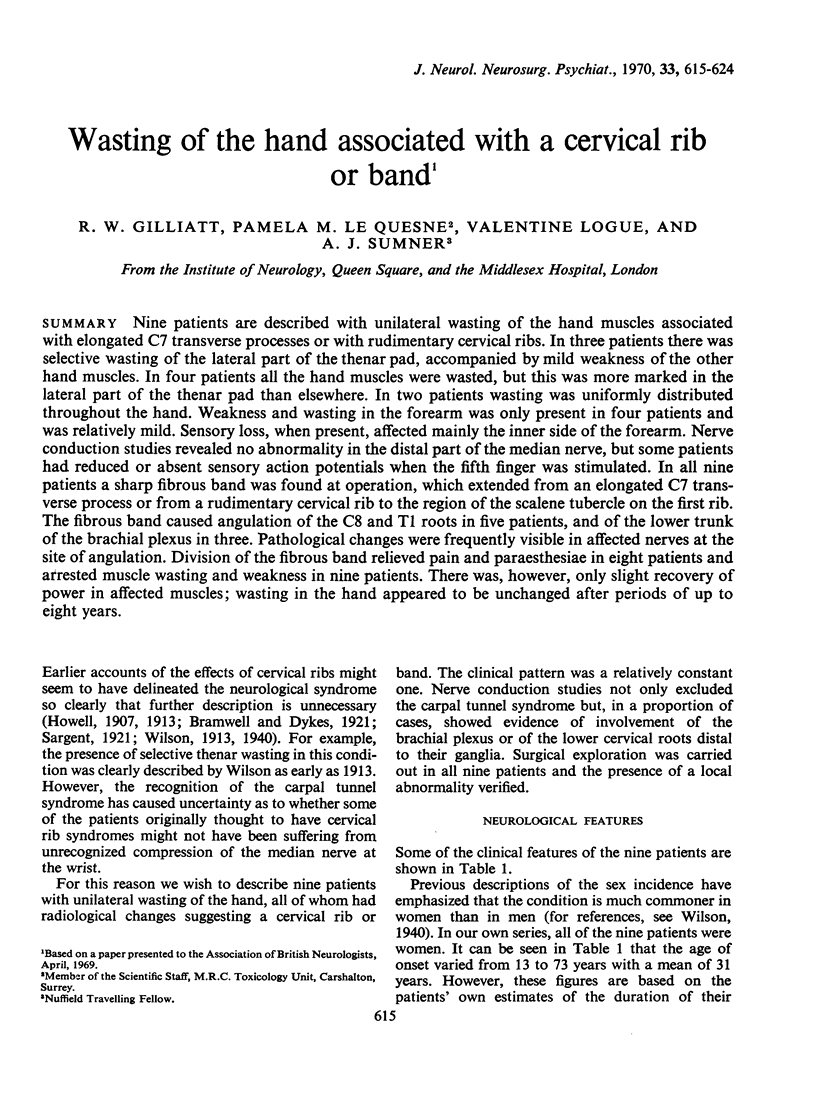
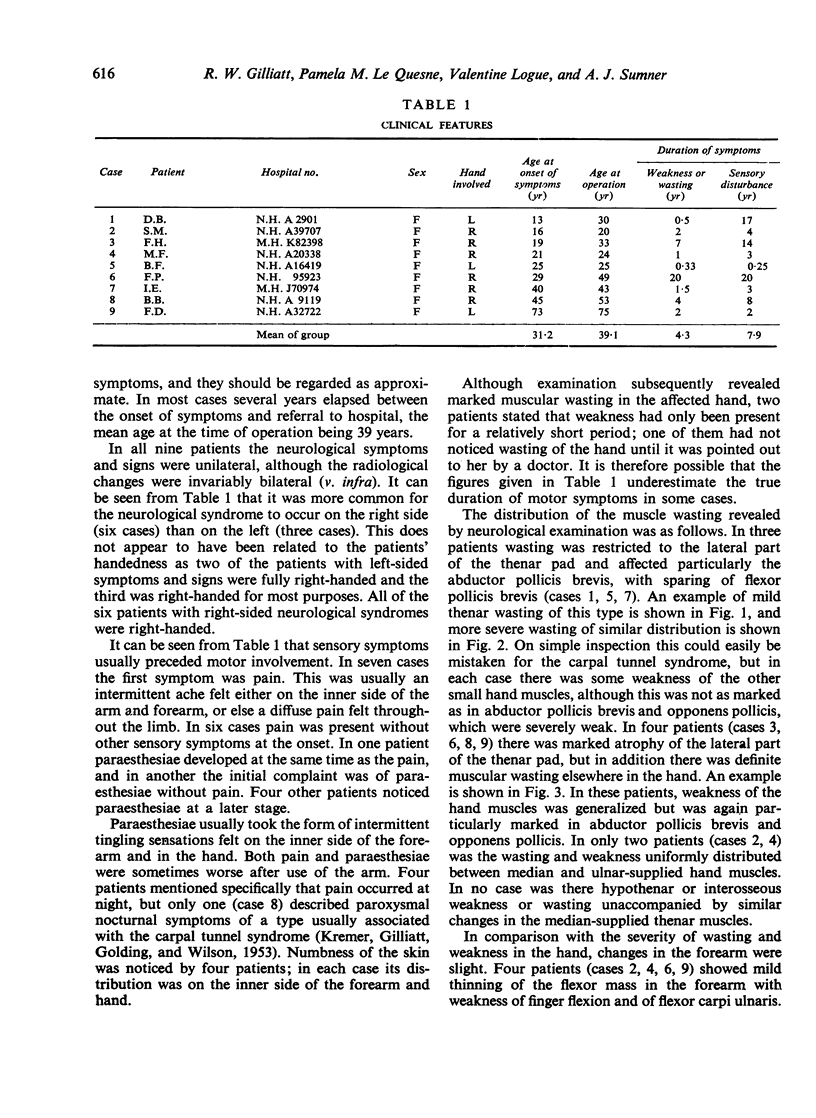
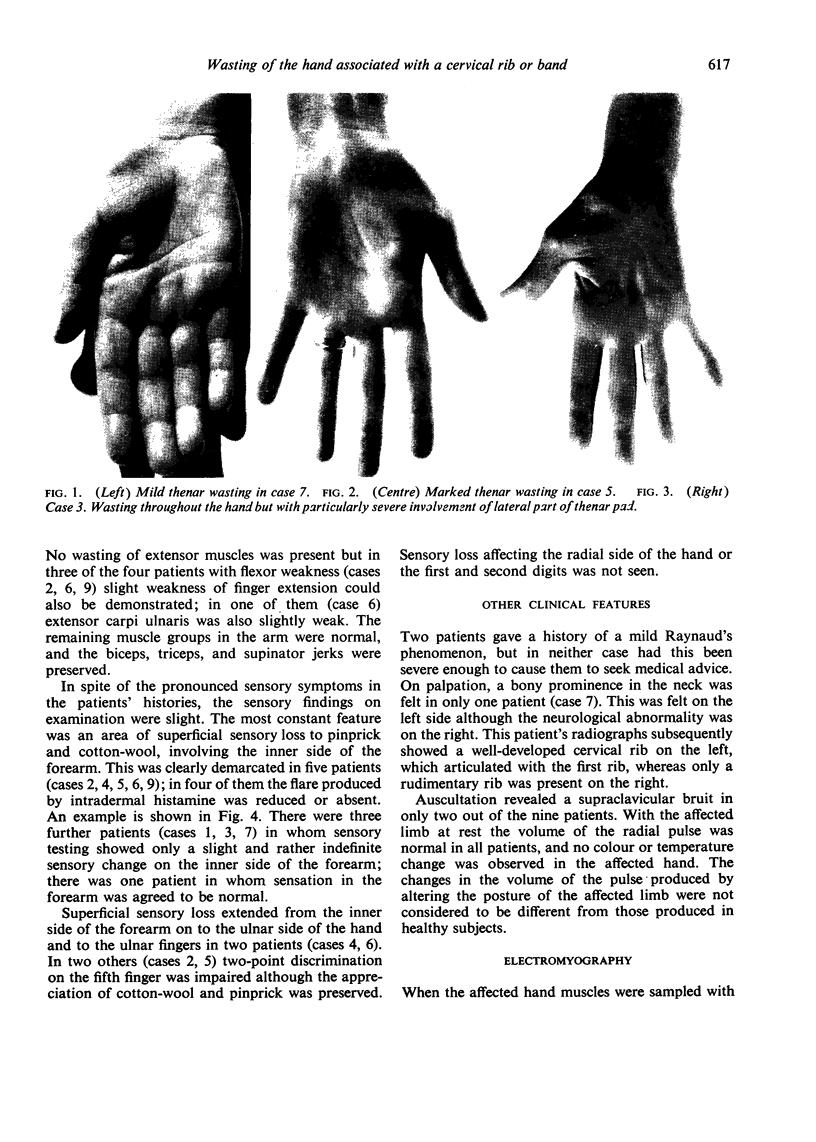
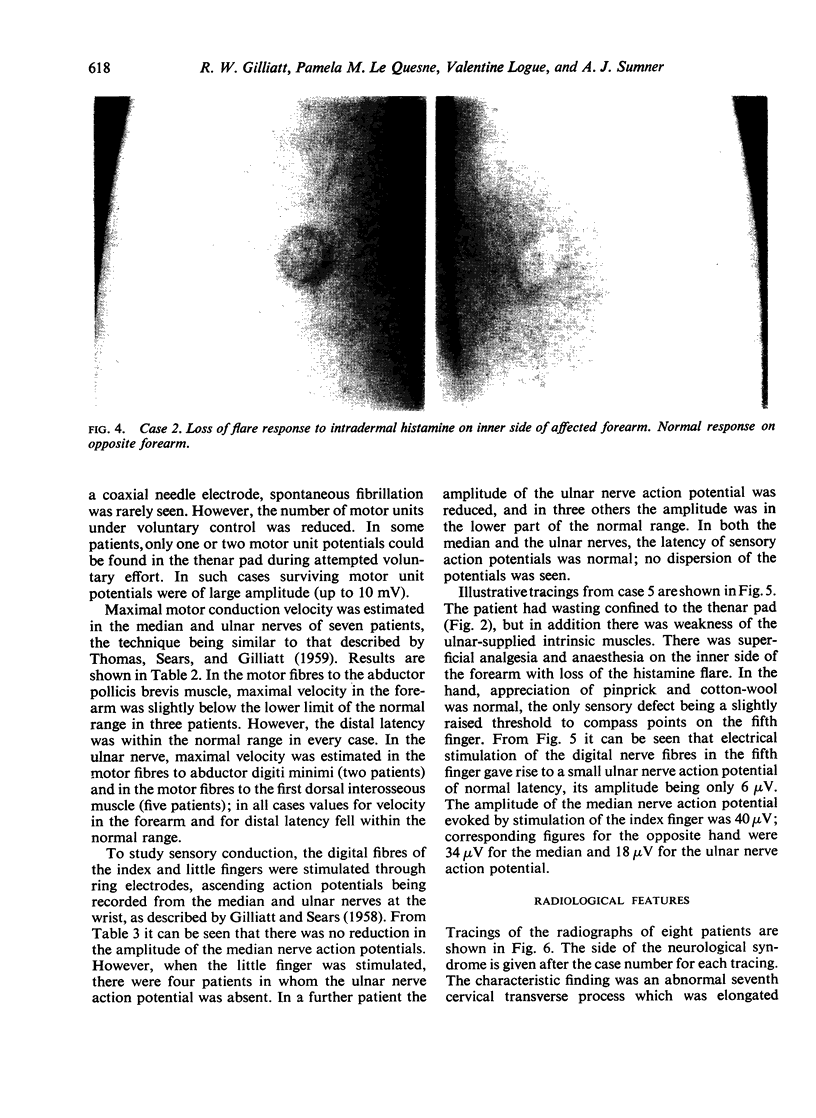
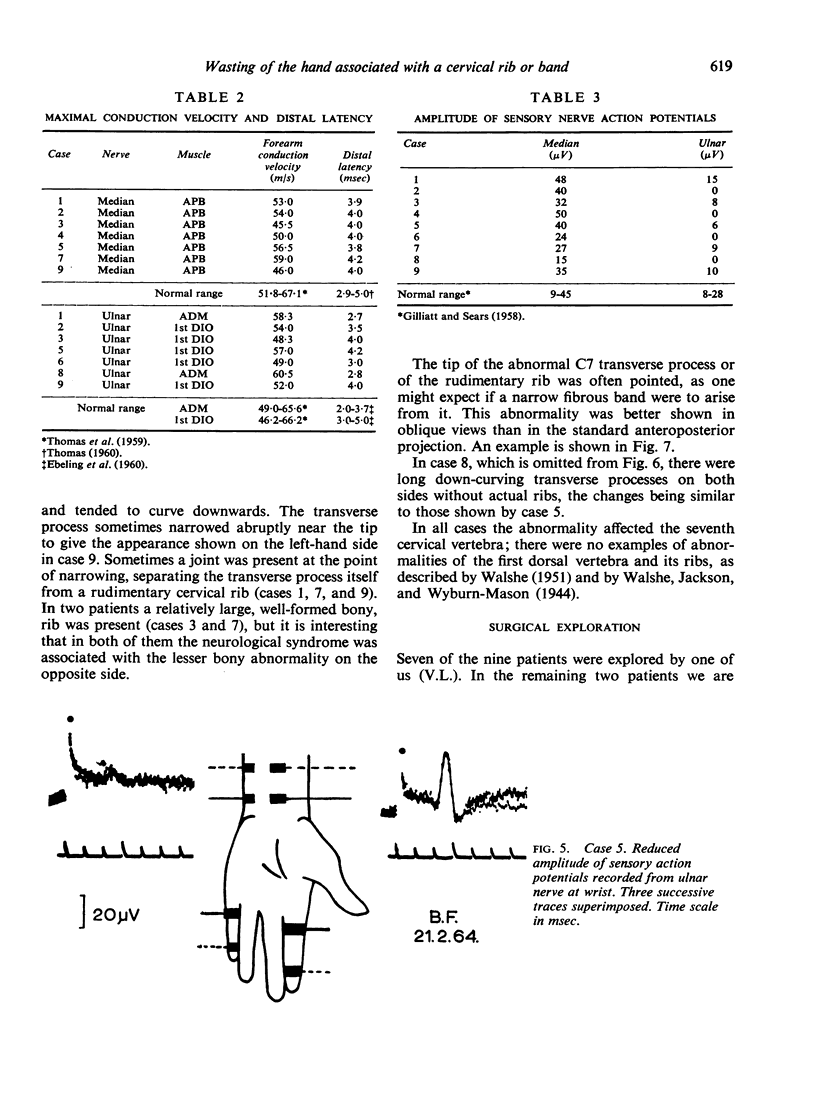
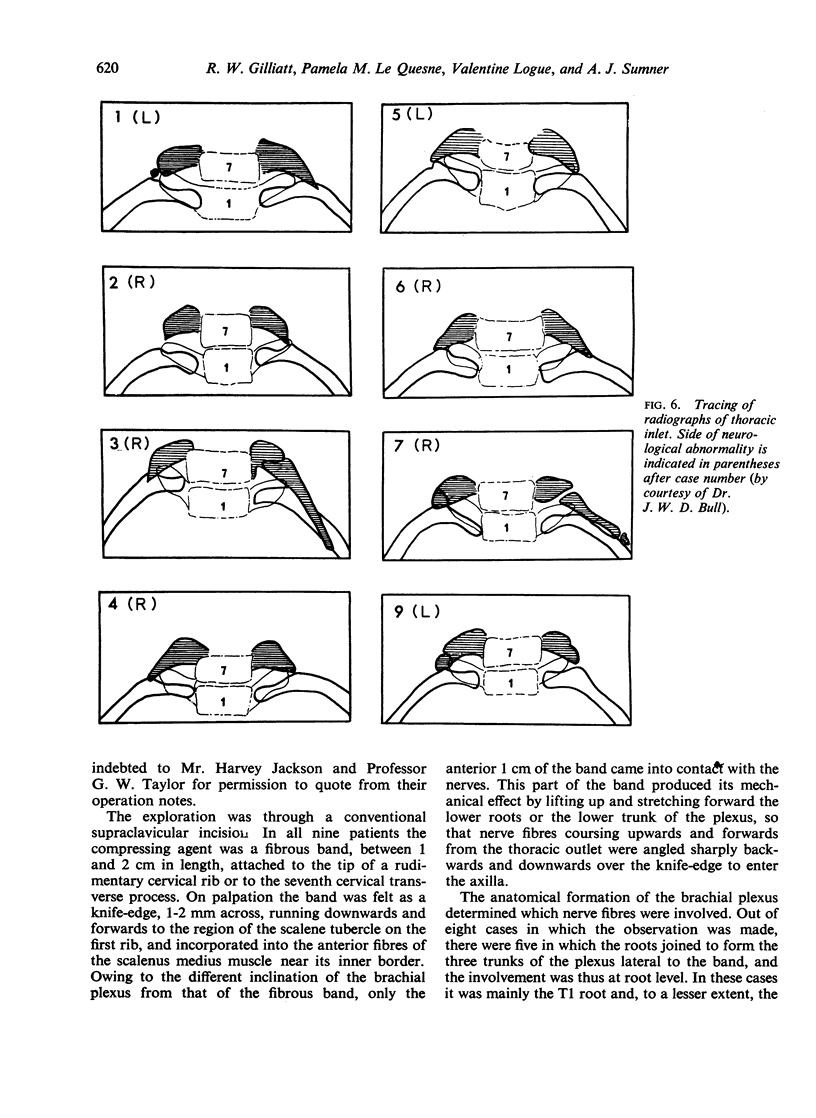
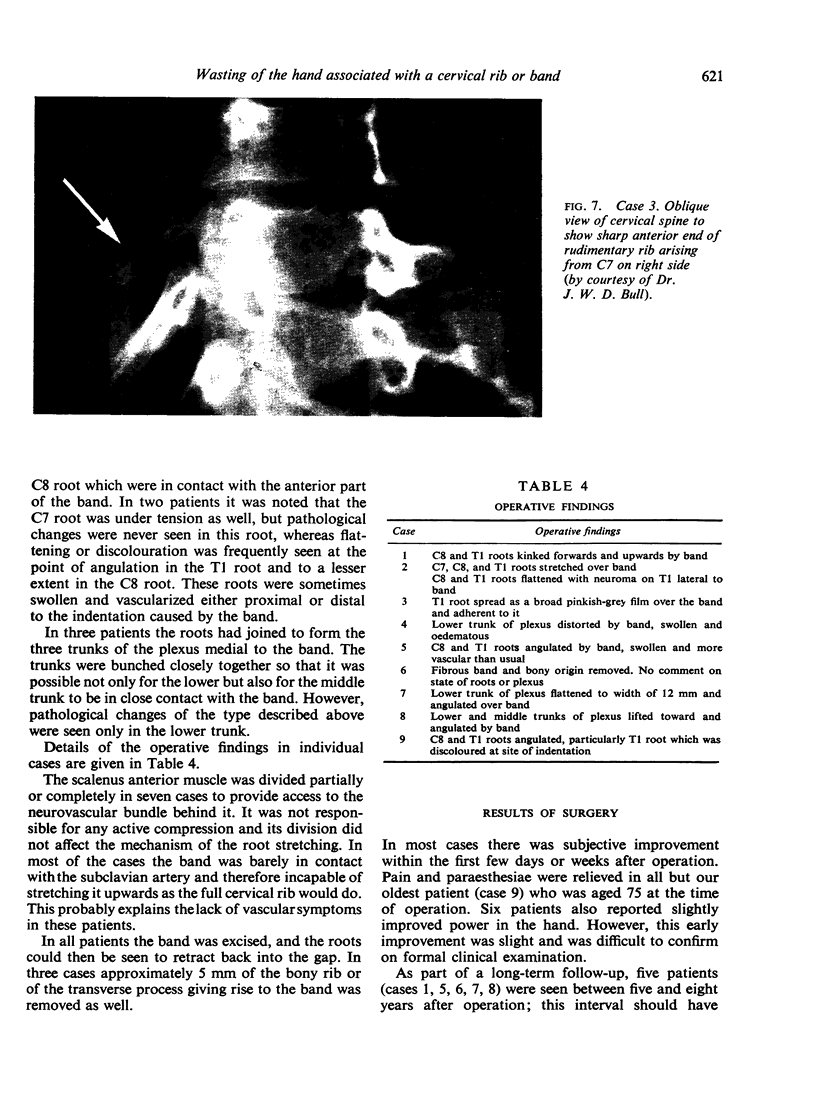
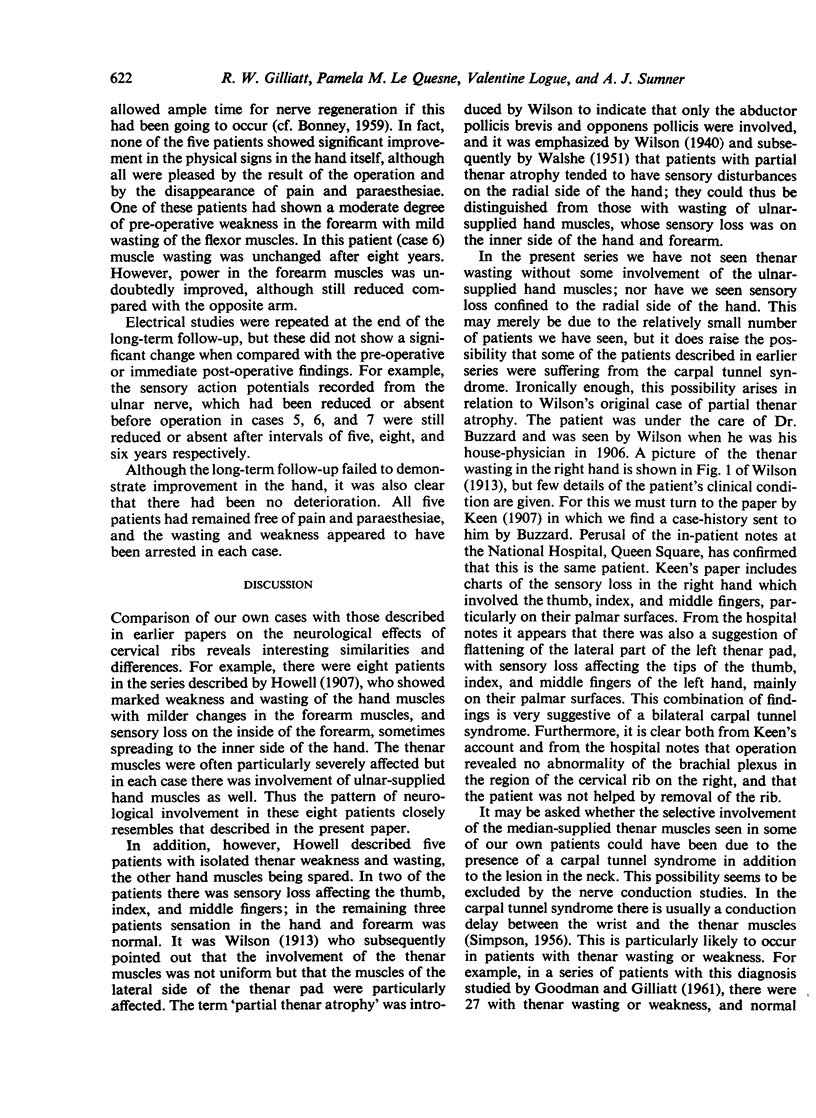
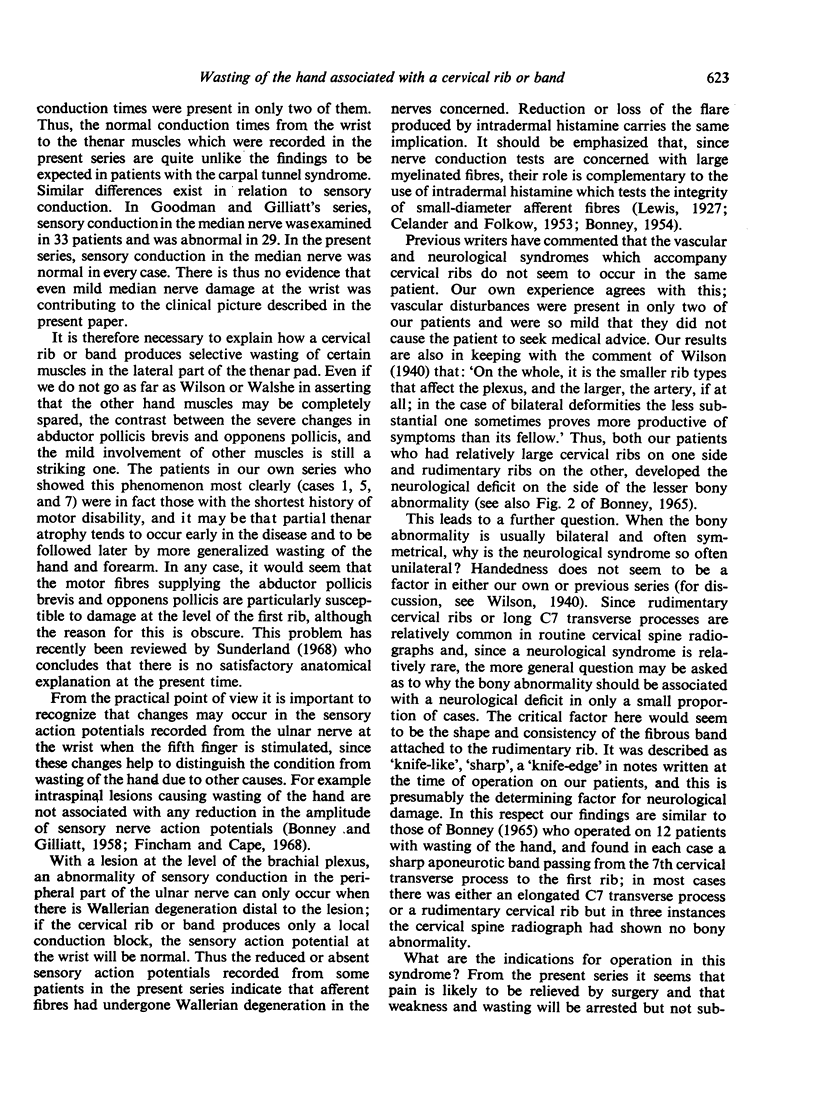
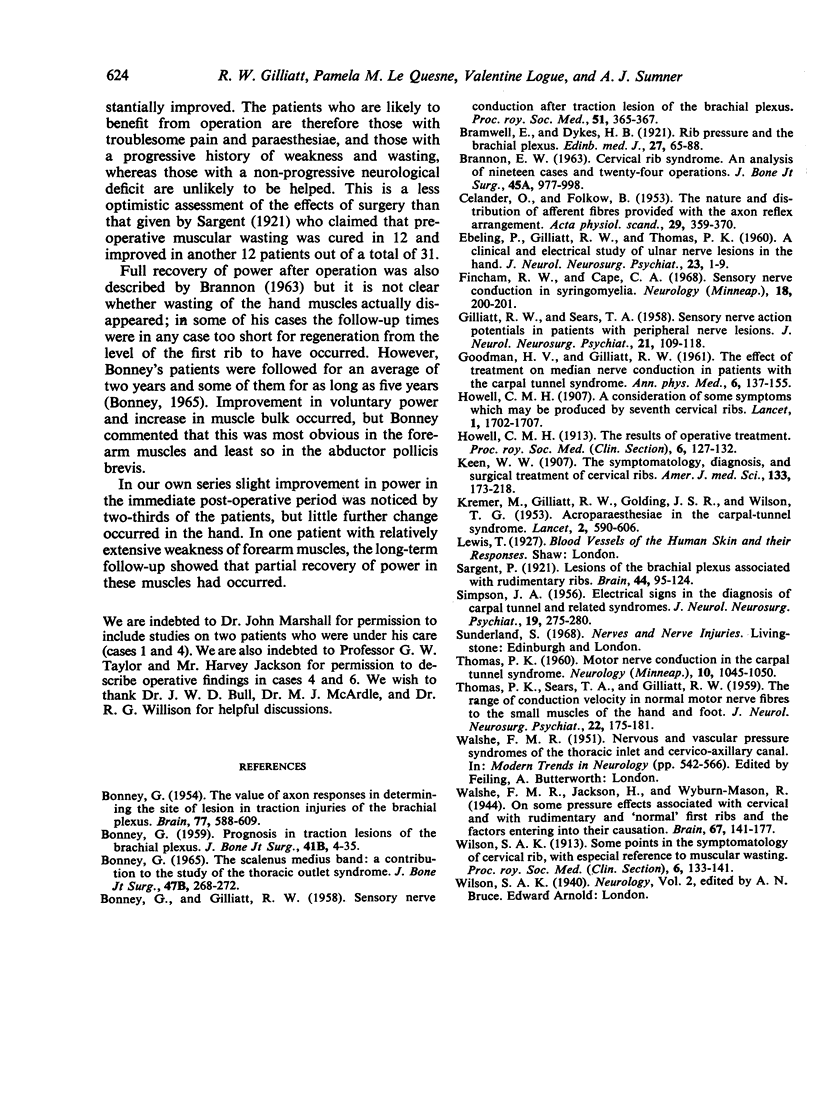
Images in this article
Selected References
These references are in PubMed. This may not be the complete list of references from this article.
- BONNEY G., GILLIATT R. W. Sensory nerve conduction after traction lesion of the brachial plexus. Proc R Soc Med. 1958 May;51(5):365–367. [PMC free article] [PubMed] [Google Scholar]
- BONNEY G. Prognosis in traction lesions of the brachial plexus. J Bone Joint Surg Br. 1959 Feb;41-B(1):4–35. doi: 10.1302/0301-620X.41B1.4. [DOI] [PubMed] [Google Scholar]
- BONNEY G. THE SCALENUS MEDIUS BAND; A CONTRIBUTION TO THE STUDY OF THE THORACIC OUTLET SYNDROME. J Bone Joint Surg Br. 1965 May;47:268–272. [PubMed] [Google Scholar]
- BONNEY G. The value of axon responses in determining the site of lesion in traction injuries of the brachial plexus. Brain. 1954 Dec;77(4):588–609. doi: 10.1093/brain/77.4.588. [DOI] [PubMed] [Google Scholar]
- BRANNON E. W. CERVICAL RIB SYNDROME. AN ANALYSIS OF NINETEEN CASES AND TWENTY-FOUR OPERATIONS. J Bone Joint Surg Am. 1963 Jul;45:977–998. [PubMed] [Google Scholar]
- CELANDER O., FOLKOW B. The nature and the distribution of afferent fibres provided with the axon reflex arrangement. Acta Physiol Scand. 1953 Nov 17;29(4):359–370. doi: 10.1111/j.1748-1716.1953.tb01032.x. [DOI] [PubMed] [Google Scholar]
- EBELING P., GILLIATT R. W., THOMAS P. K. A clinical and electrical study of ulnar nerve lesions in the hand. J Neurol Neurosurg Psychiatry. 1960 Feb;23:1–9. doi: 10.1136/jnnp.23.1.1. [DOI] [PMC free article] [PubMed] [Google Scholar]
- Fincham R. W., Cape C. A. Sensory nerve conduction in syringomyelia. Neurology. 1968 Feb;18(2):200–201. doi: 10.1212/wnl.18.2.200. [DOI] [PubMed] [Google Scholar]
- GILLIATT R. W., SEARS T. A. Sensory nerve action potentials in patients with peripheral nerve lesions. J Neurol Neurosurg Psychiatry. 1958 May;21(2):109–118. doi: 10.1136/jnnp.21.2.109. [DOI] [PMC free article] [PubMed] [Google Scholar]
- GOODMAN H. V., GILLIATT R. W. The effect of treatment on median nerve conduction in patients with the carpal tunnel syndrome. Ann Phys Med. 1961 Nov;6:137–155. doi: 10.1093/rheumatology/6.4.137. [DOI] [PubMed] [Google Scholar]
- Howell C. M. The Results of Operative Treatment. Proc R Soc Med. 1913;6(CLIN):127–132. [PMC free article] [PubMed] [Google Scholar]
- KREMER M., GILLIATT R. W., GOLDING J. S., WILSON T. G. Acroparaesthesiae in the carpal-tunnel syndrome. Lancet. 1953 Sep 19;265(6786):590–595. doi: 10.1016/s0140-6736(53)90326-2. [DOI] [PubMed] [Google Scholar]
- SIMPSON J. A. Electrical signs in the diagnosis of carpal tunnel and related syndromes. J Neurol Neurosurg Psychiatry. 1956 Nov;19(4):275–280. doi: 10.1136/jnnp.19.4.275. [DOI] [PMC free article] [PubMed] [Google Scholar]
- THOMAS P. K. Motor nerve conduction in the carpal tunnel syndrome. Neurology. 1960 Dec;10:1045–1050. doi: 10.1212/wnl.10.12.1045. [DOI] [PubMed] [Google Scholar]
- THOMAS P. K., SEARS T. A., GILLIATT R. W. The range of conduction velocity in normal motor nerve fibers to the small muscles of the hand and foot. J Neurol Neurosurg Psychiatry. 1959 Aug;22:175–181. doi: 10.1136/jnnp.22.3.175. [DOI] [PMC free article] [PubMed] [Google Scholar]
- Wilson S. A. Some Points in the Symptomatology of Cervical Rib, with Especial Reference to Muscular Wasting. Proc R Soc Med. 1913;6(CLIN):133–141. [PMC free article] [PubMed] [Google Scholar]





